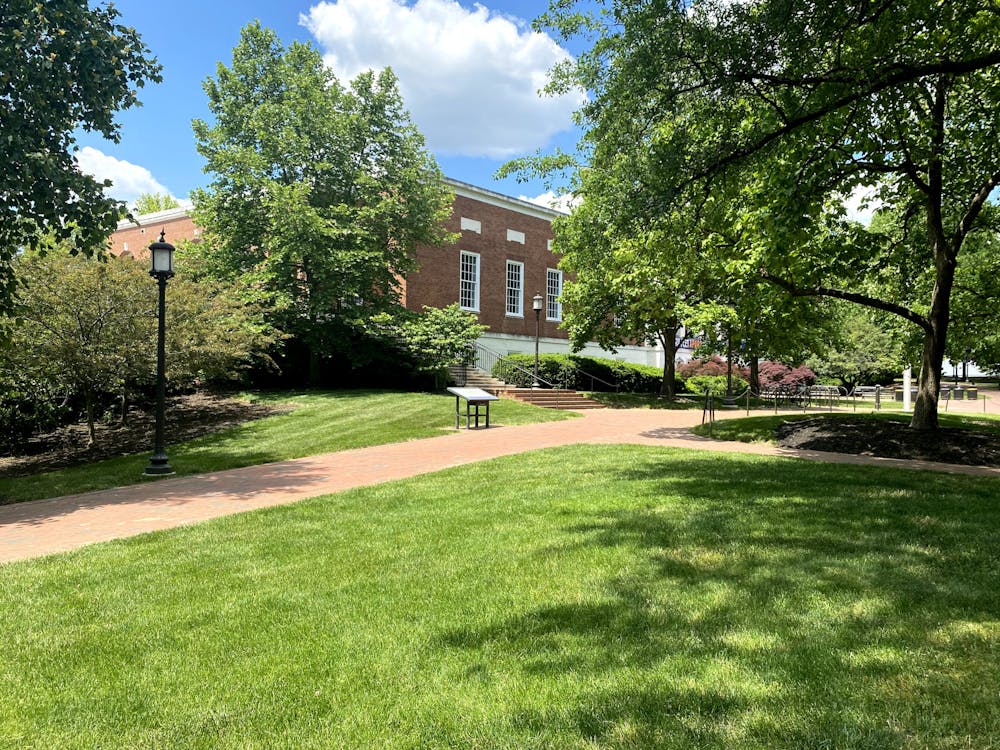The University is implementing initiatives to make campus more accessible with the Second JHU Roadmap for Diversity, Equity, and Inclusion. Progress for initiatives has already begun, while others will come into effect in Spring 2023. One of the recent initiatives, the Accessibility Map, depicts accessible routes on campus and was first released prior to the Fall 2022 semester.
In an email to The News-Letter, Assistant Vice President for Media Relations and News J.B. Bird described the purpose of the second roadmap.
“Fostering an inclusive and welcoming environment for individuals with disabilities and ensuring that our academic programs, support services and facilities are accessible to all is a top priority of the university, and one that we have been working toward for some time,” he wrote.
Bird listed opportunities for students to engage with the Roadmap’s initiatives and give their feedback as new phases and policies are instituted.
“Students will be invited to respond to two upcoming surveys, the AHEAD review this fall solely focused on disability inclusion and accommodations and the broader Spring Climate Survey in which disability inclusion is a component,” he wrote.
The first phase of the Accessibility Map referenced independent assessments of campus and student opinions. It was informed by accessibility surveys, conversations with students and a partnership with the Institute for Human Centered Design.
In an interview with The News-Letter, Sophomore Student Government Association Senator Jackson Morris discussed how the structure of campus is not inherently accessible, a problem exacerbated by recent construction, which can create unexpected obstacles. These issues were raised in a committee meeting last year where a handful of students were invited to offer input on the Accessibility Map.
Kate Ketelhohn, treasurer of Advocates for Disability Awareness, attended the committee meeting. In an interview with The News-Letter, she described how certain concerns voiced during the meeting were not fully addressed, specifically those regarding the accessibility entrances in Levering Hall.
“One of the main features on the map that I don't love is the fact that there's inaccessible pathways with accessible entrances,” she said. “Hopkins is now acknowledging that there are these accessibility problems, but I've heard nothing about them fixing it.”
While some suggestions were not taken into account, Ketelhohn added that collaboration between representatives ensured other concerns were addressed. Specifically, she noted that together with a Student Disability Services (SDS) representative, students ensured that stairways were a marked feature on the map.
Morris, who also participated in the committee meeting, described how recent events have impacted student opinions of the administration.
“There is some distrust amongst disabled students at Hopkins and [administration] because of the ordeal that happened to the counseling students who were dismissed from the School of Education. I still don't think that there's ever been enough transparency from the University in those decisions,“ he said. “Because of that, it makes it really hard for students with disabilities to feel that we’ll be treated equitably by administration.”
Morris emphasized that the benefits of accessibility impact every student on campus.
“Just from a general accessibility standpoint, it's really nice to have a simpler way to get around campus,“ he said. “There's something to be said that it's beneficial for the University and beneficial for all members of the University.”
In an interview with The News-Letter, sophomore Leyra Espino-Nardi commented that the alternative routes featured in the Accessibility Map help her choose the path best suited to her mobility needs.
“These kinds of bits have been really helpful and I’m really proud that our community was able to create this map,” she said.
Phase two of the Accessibility Map is set to be released in the spring of 2023 with the goal of creating a more interactive interface, ensuring the app is accessible to nonvisual users.
Espino-Nardi discussed changes she would like to see in phase two.
“There's one [feature] that...would be really helpful: knowing where stair railings are,“ she said. “Because I have balance issues, it's actually easier to hold on to railings and balance that way when I'm going up and down stairs, and I know that the Breezeway has railings, which is a huge lifesaver. There's other spots on campus where they have stairs where they don't have railings.”
Morris referenced how elevation shifts and changes in accessibility due to closures or construction should be marked and updated on the Accessibility Map.
“It's an imperfect product, but it can hopefully be improved upon. One of the things we said was ‘What if we made something that's dynamic?’” he said. “What if we made something that somebody could essentially plot their own path for or through and if something comes up on that path...it could let them know what’s happening?”
In addition to these initiatives, the roadmap will also be creating a new position centered around disability culture in the Office of Diversity and Inclusion, as well as a new Disability Advisory Committee.
In reference to the AHEAD survey conducted by SDS, Morris expressed the importance of collecting and publishing information on graduation and retention rates.
“Getting the university to publish graduation rates of disabled students is a huge, huge thing for us because if there's a discrepancy there, that tells us that there are areas of inequity that needs to be fixed, and hopefully adjusted for future classes,” he said.





